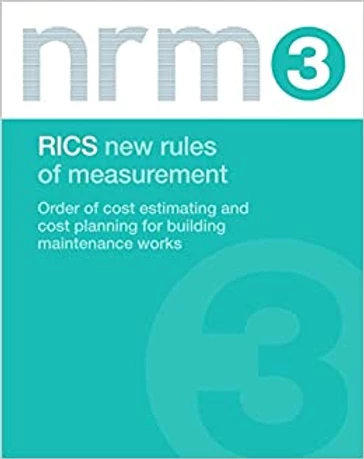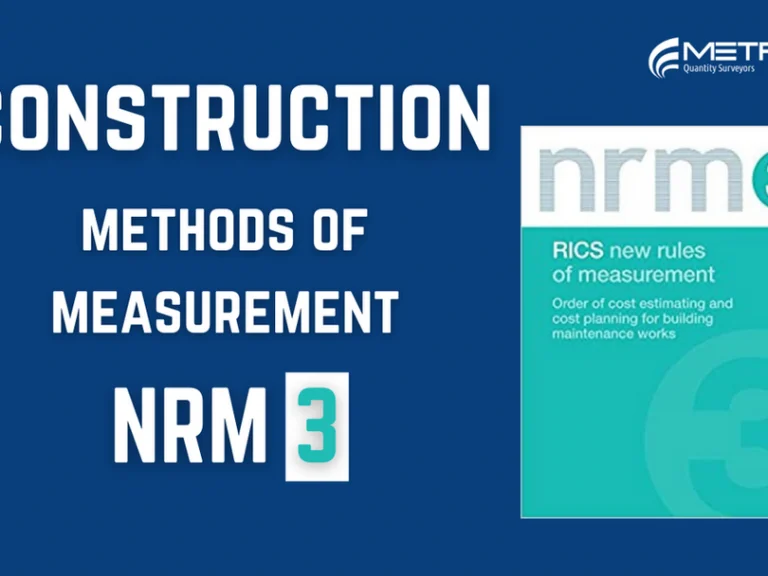The Royal Institute of Chartered Surveyors (RICS) have developed and published a suit of documents titled the New Rules of Measurement or NRM for short. There are 3 volumes that make up the New Rules of Measurement. We have videos and blogs covering NRM 1 which covers the order of cost estimating and cost planning for capital building works and NRM 2 which details rules and guidance around detailed measurement for building works, specifically focusing on Bill of Quantities.
This blog and video is going to provide a summary of what NRM 3 is and what it was developed for.

NRM 3 is titled: “Order of cost estimating and cost planning for building maintenance works”. Unlike NRM 1 which focuses on cost estimating and cost planning for the initial building works, NRM 3 is only interested in estimates and cost planning for the maintenance of buildings and associated works. Its main purpose is intended to provide a consistent method for the quantification and description of all things relating to maintenance and renewal elements of a building. NRM 3 was published in March 2014 and consists of 6 main parts:
Part 1: places the order of estimating and cost planning for maintenance works in context with the RIBA Plan of Work and OGC Gateway Process and explains the symbols, abbreviations and definitions used in the rules.
Part 2: sets out the basis for NRM 3, these include:
· It clarifies how maintenance costs relate to construction and life cycle costing
· Defines the scope and parameters for the renewal (R) and maintain (M) cost categories
· Explains the levels of measurement and process of cost estimating and cost planning for maintenance works
· Provides preparation rules for defining project particular requirements (depending on the stage in the building life cycle)
· Explains the importance of developing a clear and comprehensive employer’s maintenance brief and measurement rules; and discusses how to deal with projects comprising multiple buildings or facilities.
Part 3: describes the purpose and content of cost estimates and explains how to prepare and report an order of cost estimate. It also sets out the rules of measurement for the preparation of order of cost estimates using the floor area method, functional unit method and elemental method.
Part 4: describes the purpose and content of elemental cost planning for building maintenance works and explains the rules for measurement for formal cost plan reporting.
Part 5: describes the measurement rules for the yearly cost of maintenance works and explains the calculation methods used.
Part 6: includes a lot of information surrounding the rules and methods of NRM 3 including:
· Tabulated rules of measurement and quantification of costs of renewal and maintain works
· A standardised cost structure for renewal and maintain works integrating with the NRM 1 construct (C) cost data structure
· Methods of codifying maintenance works cost plans
· Methods of codifying cost plans for works packages
· Methods of aligning NRM 3 to the COBie data structure and definitions for Building Information Modelling (BIM).
Consequently NRM 3 provides essential guidance on the quantification and description of maintenance works pre-construction in the form of initial order of cost estimates and elemental cost plans during the design development stages and then post construction with asset-specific cost plans that can be calculated throughout the in-use phases of a building project or facility.
Unlike capital building works projects, maintenance works are required to be carried out from the day a building or asset is put to use until the end of its life. This means NRM 3 deals with costs incurred throughout the life of the building – over the short, medium and long-term. Consequently, the rules provide guidance on the measurement and calculation of the time value of money (methods of economic evaluation, NPV and payback periods), guidance on using the measured data to inform life cycle cost plans and forward maintenance plans, as well as VAT, and taxation.
Lastly, it’s important to mention that NRM 3 does not just help Quantity Surveyors, it also provides guidance for the facilities manager of the respective buildings and therefore the employer!










